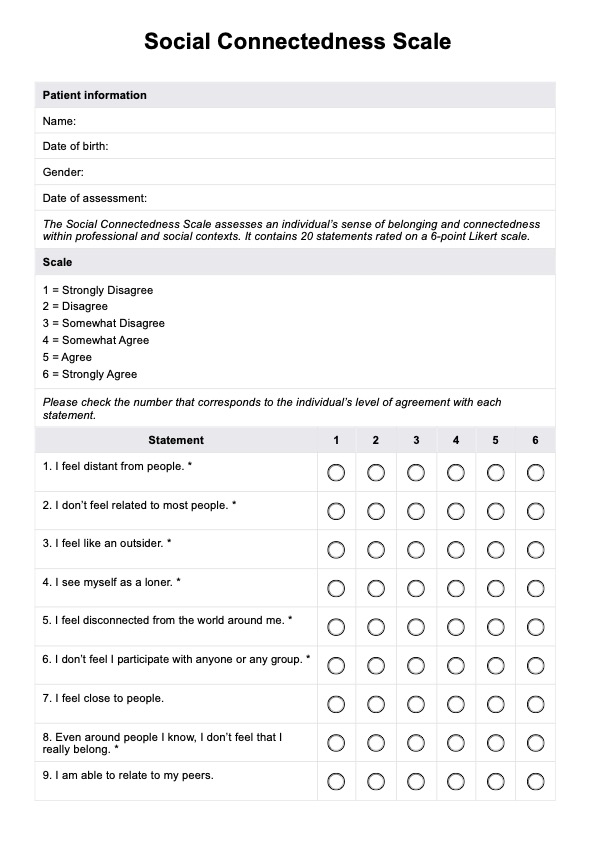The Social Connectedness Scale (SCS) is commonly used to measure an individual's sense of social connectedness. It evaluates various aspects, including belongingness, closeness, support, and satisfaction in social relationships.

Social Connectedness Scale
Effectively measure social connectedness with the Social Connectedness Scale. Download Carepatron's free fillable PDF to use in your practice.
Social Connectedness Scale Template
Commonly asked questions
Yes, the Social Connectedness Scale has been shown to be reliable and valid in multiple research and clinical settings. It consistently measures social connectedness and correlates with outcomes like mental health and well-being.
To score the revised Social Connectedness Scale, first reverse-score the negative statements. Then, the scores from the positive and reverse-scored negative statements are used to calculate the total score, which indicates the level of social connectedness.
EHR and practice management software
Get started for free
*No credit card required
Free
$0/usd
Unlimited clients
Telehealth
1GB of storage
Client portal text
Automated billing and online payments











